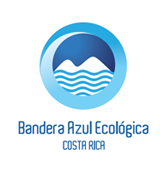Monteverde is a little piece of heaven that has a history full of hope, work, and dreams come true …
Between 1915 and 1918 the first non-indigenous families arrived in the region now known as Monteverde. As in other remote areas of the country, these families came from the Central Valley, in search of land that they could work for and then claim title deed. Independently, some entered the valley of the San Luis River, others in the hills that denominated Los Cerros (now La Lindora), and others entered from the area of Las Juntas (Abangares, Guanacaste). All were dedicated to subsistence farming; Some supplemented their economy with the production of grains and animals to market, such as beans, corn, pigs.
There was no indigenous population in the region at the time, but there was evidence that there were small settlements. However, the lack of appreciation of the indigenous culture meant that the few indigenous cemeteries were looted and pieces made of pottery and stone were appropriated, destroyed and sometimes sold. A high percentage of the food came from the same region, except for some products of the ticos diet that did not adapt to the climate and soil of the area, such as rice, salt, wheat flour. The hunting and consumption of wild meat was an important part of the diet. The agrochemicals were still unknown. Some products grown in the region could be marketed in larger population centers, using horses for transport, in days of more than six hours. It was the case of beans, corn and then coffee. Domestic animals such as pigs and cattle also represented a very precarious and difficult opportunity for trade.
In the absence of basic public services, the well-being of the population depended more on mutual aid and the development of many basic skills and knowledge (construction, health, agricultural production, garment making, etc. Of all, perhaps the most important was Solidarity and mutual help.
In the 1940s, the first two public primary education centers were built. But it would take more than thirty years for the first public school to be created (1977). Subsistence agriculture prevailed until the 1950s, when the Quackers began to develop the milk industry, while some Ticos also began to grow coffee.
The famous cheeses …
During this decade cheese production began under the leadership of Quaker immigrant families in the early 1950’s when a group of Quaker families from the United States entered Costa Rica in search of peace and tranquility. Some members of these families were imprisoned by the US government because they did not participate in the Korean war, so they decided to settle in Costa Rica, both because there was no army and because of the natural wealth they found.






